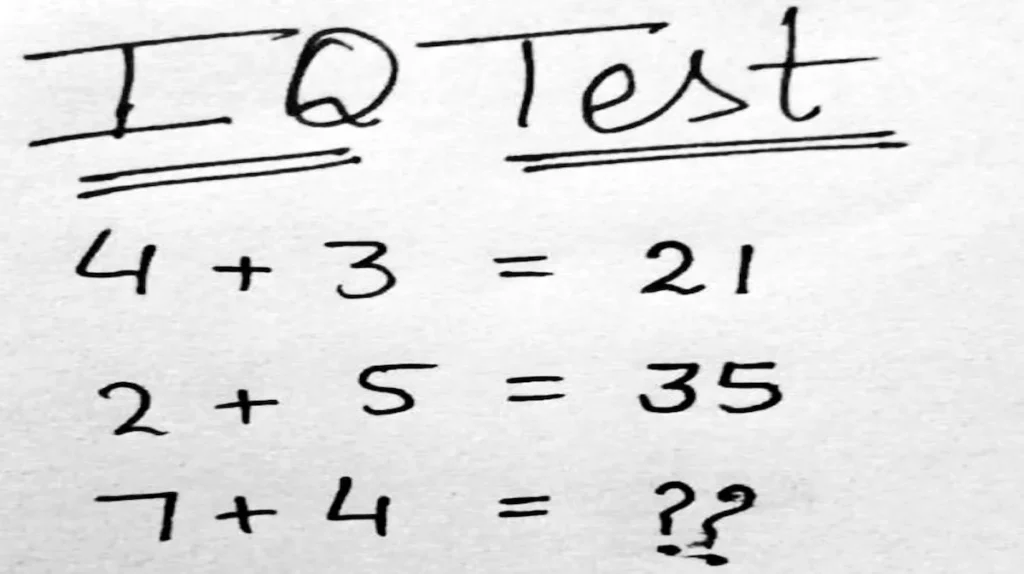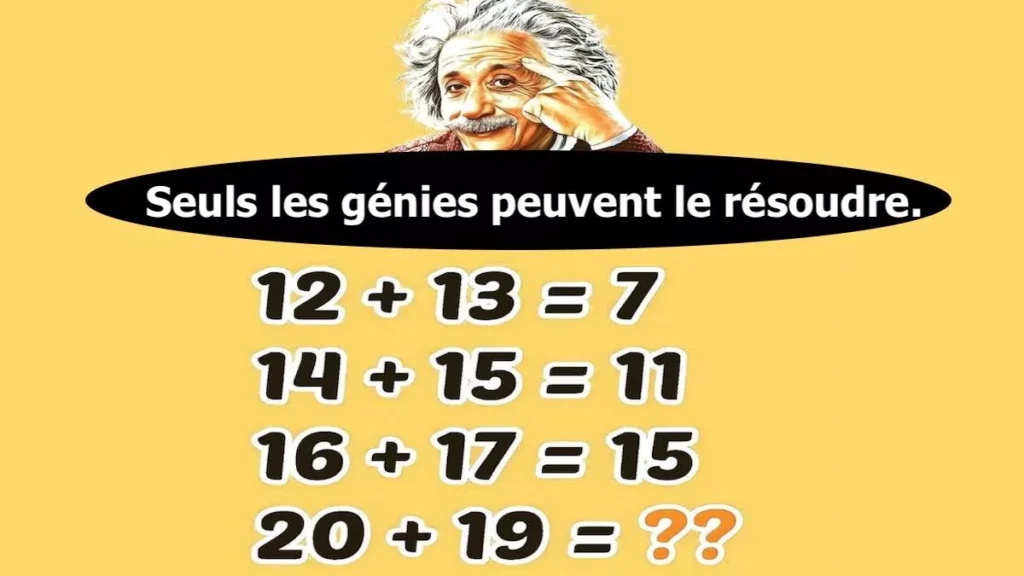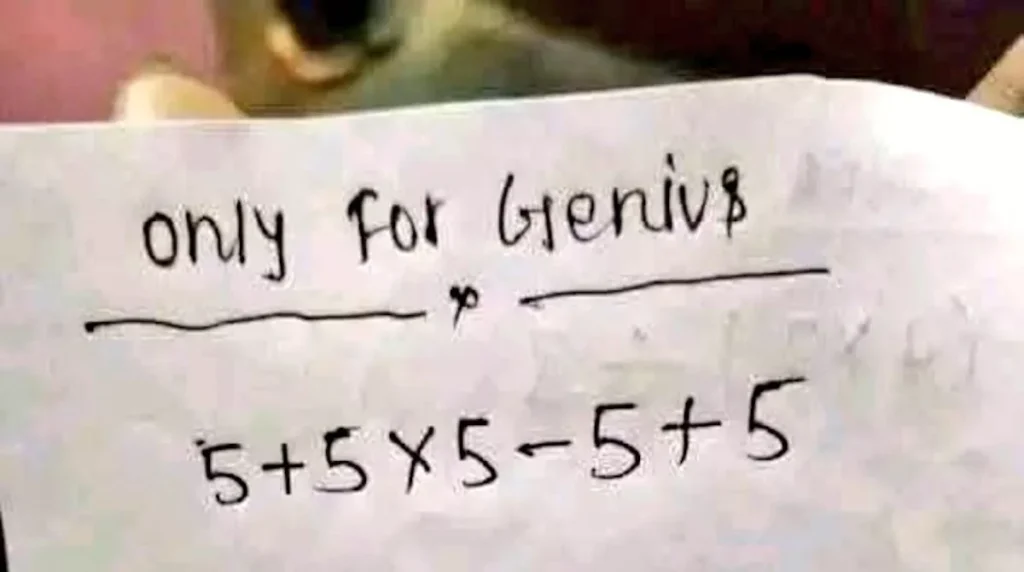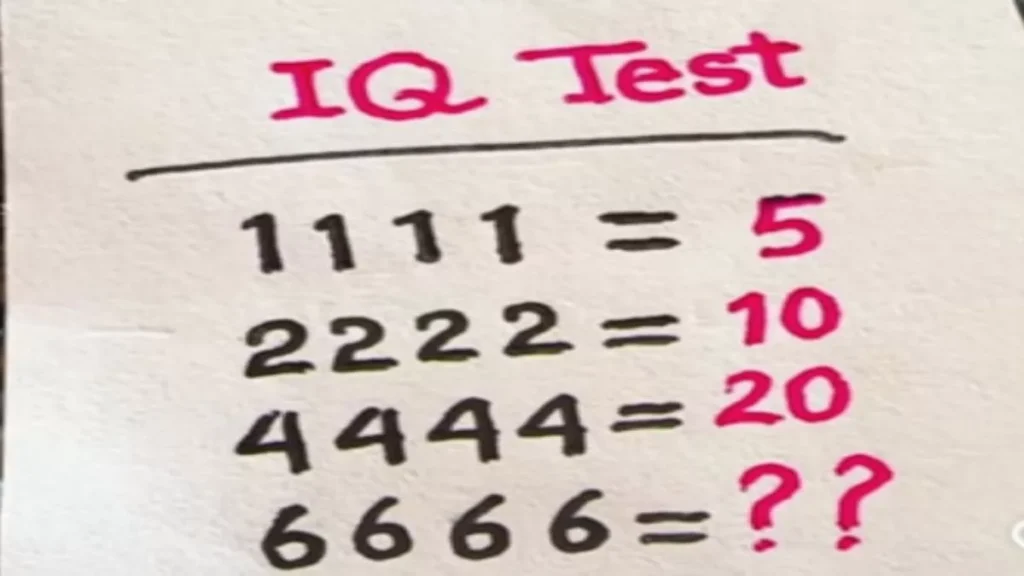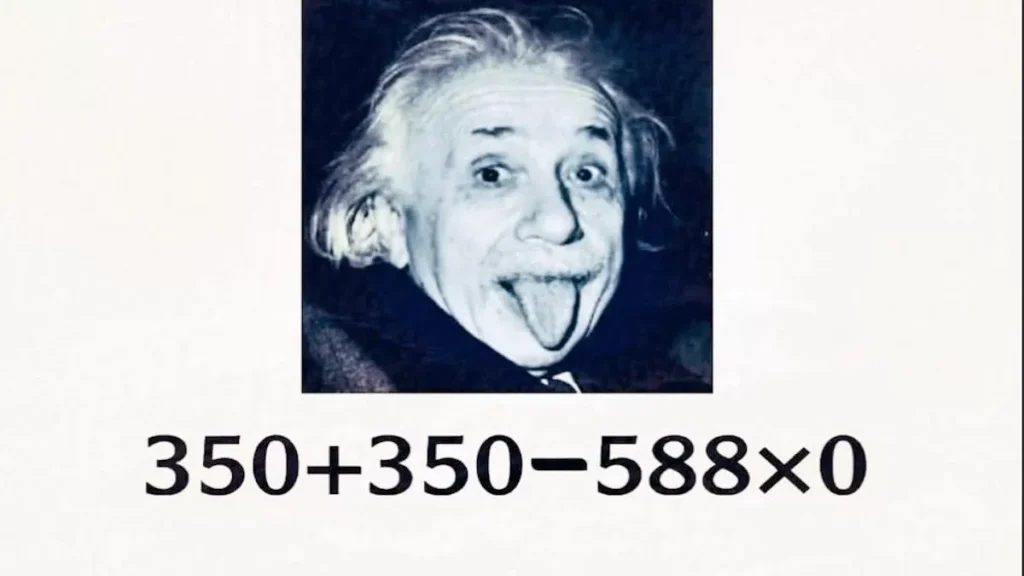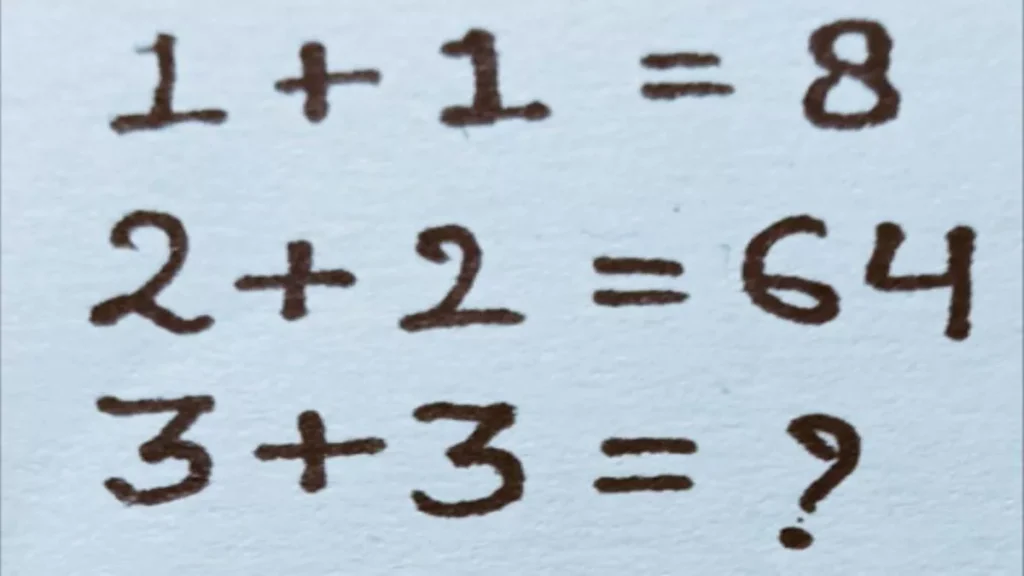A New Math Puzzle Is Taking Social Media By Storm
A new math puzzle, recently shared on social media, is intriguing internet users. Can you solve this riddle? Math puzzles have long captivated both enthusiasts and casual fans, stimulating our minds and challenging the fundamentals of arithmetic. If you enjoy these original challenges, this one is currently trending online.
A New Approach To Basic Arithmetic
The puzzle is presented as follows:
IQ Test:
- 4 + 3 = 21
- 2 + 5 = 35
- 7 + 4 = ??
If you have always enjoyed challenging your mind with complex riddles, this question is just for you.
But will you be able to decipher the pattern behind these seemingly strange equations?
A Previous Riddle Sparks Ongoing Debate
This is not the first time a puzzle has caught the attention of social media users.
Recently, another riddle was released with a teaser claiming that “90% of people fail” to solve it.
Here is the riddle in question:
With their intriguing format and unusual numbers, it’s no surprise these teasers are going viral.
These two puzzles, along with others circulating on social media, have sparked lively discussions online.
Whether you are an expert in solving riddles or a novice in the world of puzzles, the growing appeal of these complex questions is undeniable.
If you’re ready to put your skills to the test, why not give it a try?
The Growing Excitement For Online Puzzles
In recent years, puzzles and riddles have become an essential part of digital culture.
Users flock to social media to test their cognitive abilities and challenge their friends.
The rise of these platforms has created a space where puzzle enthusiasts can share and solve riddles, ranging from simple calculations to more complex challenges.
A Community Passionate About Brain Games
The attraction to these brain games continues to grow.
Every day, new challenges are published, and users enthusiastically share their solutions, seek validation, or marvel at the creativity behind these brain teasers.
It’s not just about solving puzzles; it’s also about experiencing the thrill of engaging with a community that shares a love for intellectual challenges.
Here Is The Solution We Found:
The Puzzle:
4 + 3 = 21
2 + 5 = 35
7 + 4 = ??
Decrypting The Riddle:
This puzzle does not follow the rules of traditional addition. There is a hidden pattern in these equations that requires a different approach. Here’s the explanation:
Observation of the results: The results do not correspond to standard addition. To find the underlying logic, we need to identify a model that connects the two left numbers to the result on the right.
Analyzing The First Equation:
4 + 3 = 21
Instead of simply adding the numbers, we can observe that 4 × 3 = 12, then add 4 to 12:
12 + 4 = 16.
However, the displayed result is 21.
So, we need to add a number to this product to obtain 21.
16 + 5 = 21.
Therefore, the rule seems to be: multiply the first two numbers, then add the first number to the product.
Checking The Second Equation:
2 + 5 = 35
Let’s apply the same rule:
2 × 5 = 10, then add 2 to 10:
10 + 2 = 12.
Yet the displayed result is 35.
Here, it appears we need to add another number.
10 + 25 = 35.
The added number here is 25. Hence, we need to find a similar logic.
Applying It To The Third Equation:
7 + 4 = ??
Following this logic, we need to multiply 7 × 4:
7 × 4 = 28, then add 7 to the product:
28 + 7 = 35.
Conclusion:
The hidden model in this puzzle consists of multiplying the two first numbers, then adding the first number to the product to obtain the result.
And remember, if you prefer not to continue having fun with tests and challenges, make sure not to click here.

